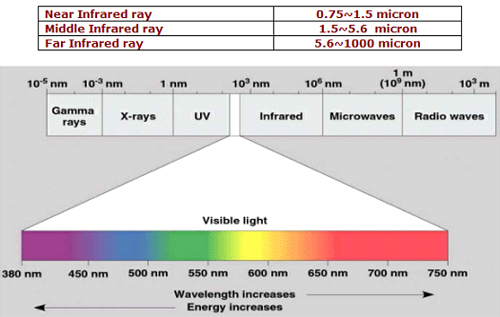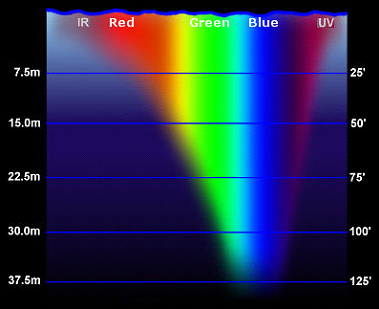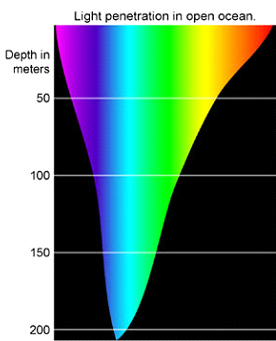The importance of clouds 2013-02-12
Have previously written a about my experiences in the Philippines. Wiill take it up again.
All the times that I've been in the Philippines has always been warm swimming water but not this summer. This year it was slightly chilly. I was so surprised. Even in Bohol where I spent some days, it was not as hot. As you dive in the Philippines, there is no need for a warming wetsuit andif you dive lower than 10 m deep and comes up in the surface water, you feel the the very good "hot tub" water.
The warmest I have ever experienced was in 2004. We would swim right outside where we lived. My youngest daughter, who then was six years old, was running out before me in the water but stopped and start scream and ran back. What was it I asked. The water is burning she said between sobs. Thought it was strange for water here to be so hot. I put in my foot, and yes it was hot so it almost hurt. I took my daughter in my arms and took a few quick steps through the shore water and out in just over half a meter deep where it was acceptably hot and where I could put down my daughter. Had someone told me this, I had hardly believed it but I got the experience myself. So hot, it has only been once. And now, last summer it was slightly chilly, no wonder that I was surprised. Next time when I come here, I will bring a thermometer with me. This was at the same location
I discussed what happened with my daughter yesterday and asked her if she remembered what happened. Of course you never forget such a thing.
What will the explanation be that this beach water felt cold last summer. In the month of July is the rainy season and normally it rains bursty but in between, the sun shines so the sun can heat the water. Now it was compact cloudy both night and day. My daughter who is now older and of course has her own mobile with an installed app on the phone so we could measure the air temperature. We discovered that it was the same temperature both day and night. 26 or 27 degrees around the clock during the day when we measured the temperature. The clouds have an amazing ability to level out the temperature differences between night and day. Limits solar radiation during the day and retain heat during the night. I did not notice any difference on the UV rays. I was almost as red as usual. UV rays can penetrate clouds better than visible light.
The radiation spectrum. No gamma rays coming from the sun

About half of the sun's radiation is radiant heat / infrared and the other half is visible half lljus plus some UV. Water vapor absorbs most of the heat radiation, and that is why infrared telescopes are built on high mountains like Mauna Kea in Hawaii. Visible light penetrates better. Clouds can reflect both types of radiation. See the diagram of the solar radiation wavelengths of 100 nm (nanometers) to 1 mm. All radiation to the right of visible light up to one millimeter are heat radiation, IR radiation.
A little reading about cloud meaning: http://www.sjsu.edu/faculty/watkins/cloudiness.htm
Then we have light absorption in liquid water.

http://www.lsbu.ac.uk/water/vibrat.html
This applies to liquid water. Visible light penetrates better. Blue light penetrates more than red light. Red light is absorbed 100 times more than blue light but the blue light is scattered more in the water giving the water the blue color
A couple of other diagrams of how the light penetrates into the water. The first is of water in shallow seas. But the strange thing is that the light penetrates more in the deep sea see chart below. Notice how badly IR radiation penetrates. It is stopped at the surface.


http://oceanexplorer.noaa.gov/explorations/04deepscope/background/deeplight/deeplight.html
Ir-rays heats up only the top millimeter. When the sun don´t shine directly the water is not heated. There must be a cloudless sky that let enough sunlight through for the water to warm up a bit more. This was what I experienced in the Philippines.
It is not only water that is heated by visible light. How much light is transmitted through the clouds is important for the climate. Less clouds and more light rays reach the earth's surface and it becomes more heated during the day on land and more heat is absorbed by the oceans.
Have there been any changes in cloud cover over recent decades? Check the following chart of the cloud cover in the tropics and the simultaneous warming. it is interesting to examine the graphs from 2000. Both graphs are essentially horizontal. Some researchers say that with this small difference in the clouds we can explain the warming of recent decades.

An interesting new scientific study from the USA shows that solar radiation has increased noticeably. It is entitled:
Variability of the surface radiation budget over the United States from 1996 through 2011 from high-quality measurements
To explain this increase is said that " This SW brightening is attributed to a decrease in cloud coverage ".
Cloud mass has decreased slightly and this means more than the increase of CO2 in the atmosphere write the authers.
Even the IPCC climate report writes about the clouds importance.
http://www.ipcc.ch/pdf/assessment-report/ar4/wg1/ar4-wg1-chapter1.pdf